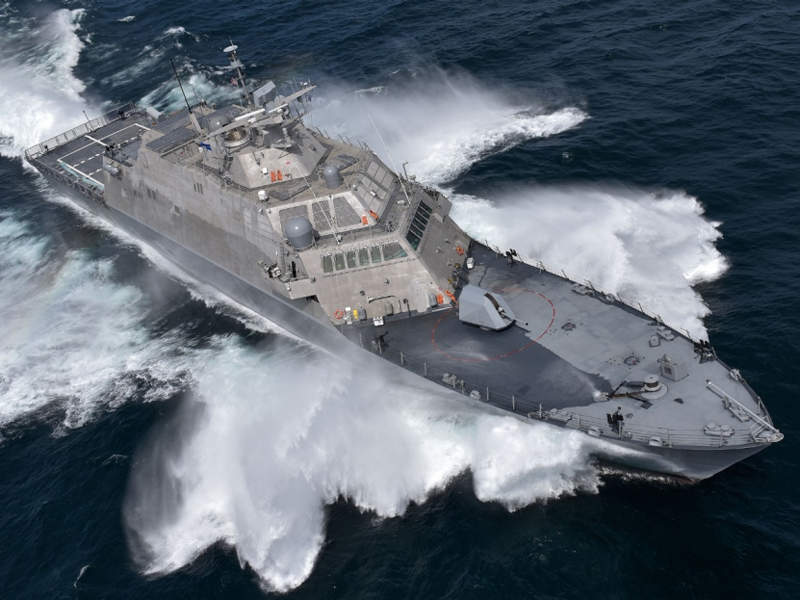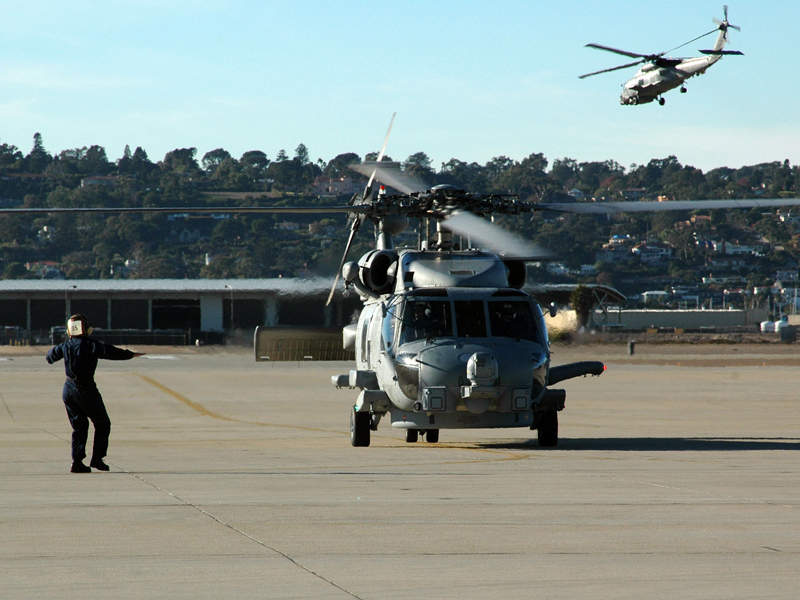Lockheed Martin Multi-Mission Surface Combatant (MMSC) is a derivative of the US Navy’s Freedom-Class Littoral Combat Ship (LCS). It was selected for the Royal Saudi Naval Forces’ (RSNF) multi-mission surface combat ship requirement.
The MMSC platform can be configured with a variety of sensors and weapons based on operational requirements of the naval customer. It also enables interoperability with the US Navy and allied naval forces in joint operations.
The ship can counter a range of current and future maritime threats in both open sea and littoral zones. Its mission capabilities include anti-surface warfare (ASuW), anti-submarine warfare (ASW), anti-air warfare (AAW), mine warfare, electronic warfare and special operations.
MMSC construction
The US State Department approved a possible $11.25bn foreign military sale (FMS) of four MMSCs and associated equipment to the Kingdom of Saudi Arabia in October 2015. A letter of offer and acceptance for the sale was signed by the US Navy and Saudi Arabia in May 2017.
In March 2018, Lockheed Martin was awarded $481m contract by the Naval Sea Systems Command to support the construction of MMSCs for the Kingdom of Saudi Arabia.
A steel-cutting ceremony was held to mark the start of construction for the first MMSC ship in October 2019.
In December 2019, Lockheed Martin team, comprising Fincantieri Marinette Marine, was awarded a $1.96bn contract to provide detailed design and construction for four MMSCs ordered by the Kingdom Saudi Arabia. The contract-related work is expected to be completed by June 2026.
The ships will be built at Fincantieri Marinette Marine shipyard in Wisconsin, US.
Design and features of MMSC
The surface combat ship features an open-architecture design with a semi-planing mono-hull made of steel and an aluminium superstructure. It can be built in different sizes with a length ranging between 118.6m to 150m to provide mission flexibility.
It will have a beam of 17.6m, a draught of 4.3m and maximum displacement of approximately 3,600t.
The large flight deck at the rear supports take-off and landing operations of an MH-60R Seahawk multi-mission maritime helicopter. It will also feature a large hangar to accommodate a helicopter and two vertical take-off and landing unmanned air vehicles (VTUAVs).
Rigid-hulled inflatable boats (RHIBs) will be carried amid ships to support naval missions in high sea state conditions.
The articulating stern ramp is designed to enable fast and safe deployment of boats.
MMSC armament details
In ASuW configuration, the ship can be armed with two Harpoon shipboard launchers with eight RGM-84 Harpoon Block II anti-ship missiles, one MK-15 Mod 31 SeaRAM close-in weapon system (CIWS) with 11-cell RIM 116C Block II Rolling Airframe Missiles (RAMs), a 57mm Mk110 deck gun and a medium-calibre rapid-fire gun.
The ASW missions will be supported by an MH-60 helicopter and AN / SLQ-25 torpedo defence system.
For AAW tasks, the ship can be outfitted with eight-cell Mk-41 vertical launch system with 32 RIM-162 Evolved Sea Sparrow missiles (ESSM), long-range standard missiles, medium-calibre rapid-fire main gun and CIWS.
A remote multi-mission vehicle (RMMV) will be used to execute mine warfare missions.
The ship can be armed with 20mm remote guns on port and starboard sides in standard configuration.
MMSC COMBATSS-21 combat system
The MMSC will feature Lockheed Martin COMBATSS-21 combat management system (CMS), which is designed to integrate the ship’s sensors, communications and armament to provide improved mission flexibility and self-defence.
The system will incorporate a display interface, weapon management system, track management system, situational awareness and identification systems.
Sensors on board MMSC
The sensors on board the MMSC will include a TRS-4D surveillance and target acquisition radar, a modern fire control radar, a multi-function phased array radar, an identification friend or foe (IFF) system, towed, hull-mounted and dipping sonars, as well as a compact low-frequency active and passive variable depth sonar.
Propulsion and performance of MMSC
The multi-mission surface combat ship will be powered by a combined diesel and gas (CODAG) propulsion system.
It will have the ability to operate in high sea state conditions and reach a maximum speed of 30k, as well as a range of 5,000nmi.
Contractors involved
Lockheed Martin is the prime contractor for Saudi Arabia’s MMSC programme. Naval architecture and marine engineering company Gibbs and Cox will provide design support for four MMSC ships under a subcontract awarded by Lockheed Martin in January 2018.





